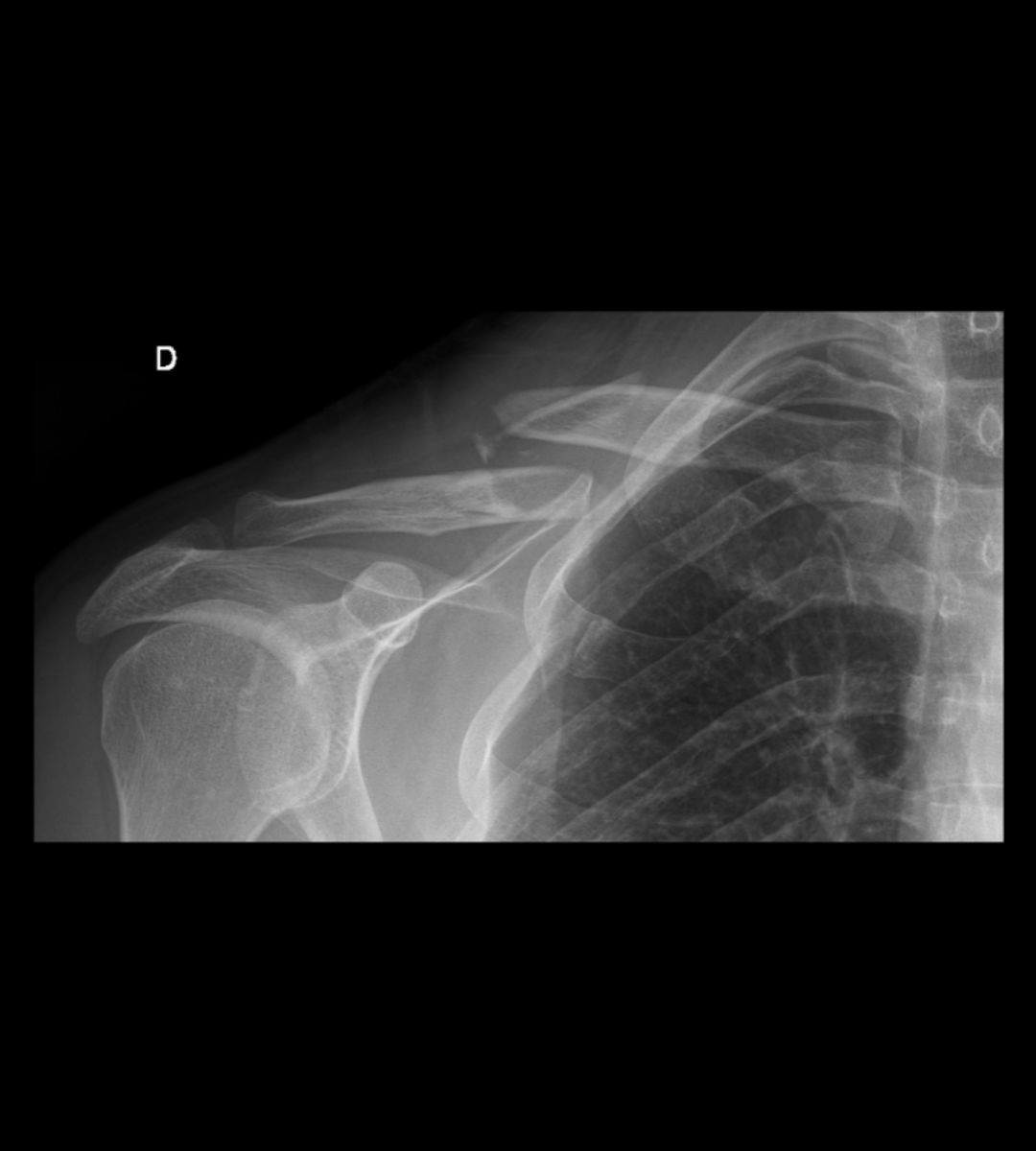Clavicle Fracture
What is a Clavicle Fracture?
What is a Clavicle Fracture?
What is a Clavicle Fracture?
The clavicle is a subcutaneous bone with virtually no muscular coverage and little vascularization. Its function is to suspend the upper limb and protect important nervous and vascular structures, such as the brachial plexus, the subclavian artery, the axillary nerve and the lung.
Clavicle fractures are among the most common, accounting for 5% of all fractures and 40% of shoulder girdle fractures (made up of the shoulder blades and clavicles).
- 80% occur in its middle region
- 15% in the lateral region of the clavicle
- 5% in the medial region

Clavicle Fracture Mechanism
Clavicle Fracture Mechanism
Fracture of the clavicle occurs in the vast majority of cases following a fall onto the shoulder (around 87% of cases), such as a fall from a bicycle, and more rarely due to direct trauma to the clavicle.
Signs and Symptoms of Clavicle Fracture
Signs and Symptoms of Clavicle Fracture
Pain, swelling and deformity in the clavicle region. It is always important to evaluate neurovascular injuries that, although rare, can be potentially dangerous in this region.
Clavicle Fracture Diagnosis
Physical examination
Physical examination
- Pain on palpation of the clavicle.
- Pain-free internal and external shoulder rotation.
X-ray
It is usually sufficient for diagnosis and decision on treatment.
Computerized Tomography (CT)
Computerized Tomography (CT)
Request for surgical planning.
Clavicle Fracture Treatment
Clavicle Fracture Treatment
Decision
Decision
You must always take into account elements relating to the fracture, as well as the patient.
Conservative
Conservative
- When to perform? Fractures with little deviation and no skin or neurovascular lesions.
- Treatment options? Use of brachial suspensory, followed by a period of rehabilitation.
- Prognosis? Generally good, with complete or nearly complete shoulder mobility expected, associated with a good aesthetic result.
Surgical
Surgical
- When to perform? – Deviation of the bone tops greater than 100% and considerable shortening of the clavicle
Skin or neurovascular injury
In athletes often to shorten recovery time - Procedure/technique – Osteosynthesis/Fixation with plate and screws.
- When to perform? – Deviation of the bone tops greater than 100% and considerable shortening of the clavicle
Postoperative
Postoperative
- The patient can be discharged on the same day or the day after surgery.
- Remove the stitches 2 weeks after surgery.
- You can start passive mobility exercises the day after surgery.
When to seek an Orthopedic Specialist?
When to seek an Orthopedic Specialist?
Whenever there is suspicion or diagnosis of a clavicle fracture.